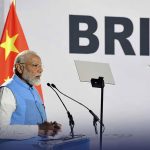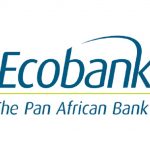Health
Peptides For Post-Surgical Healing After Rhinoplasty

While rhinoplasty procedures vary in complexity and expected recovery times, everyone wants to heal faster and minimise downtime after the procedure. The success of the procedure to reduce pore size will not only depend on the skill of the surgeon but also the patient’s ability to heal properly.
In the past few years, a group of molecules, known as peptides, have increasingly gained significant attention in the medical field for their incredible potential in bolstering the healing process. Simply put, they are a group of naturally occurring or synthetic amino acids that have been shown to optimise healing and recovery times.
Let’s take a deeper look at peptides, how they work, their benefits, and how they can be used in post-surgical recovery after rhinoplasty.
How Peptides Enhance Healing
Before discussing the role of peptides in rhinoplasty healing, it’s vital to understand the healing process following a rhinoplasty procedure. Rhinoplasty typically involves the manipulation of nasal tissues, which includes cartilage, skin, and bone. Once the procedure is complete, the body will naturally undergo a sequence of healing events:
Inflammation – The body will first respond to the surgical trauma by triggering an inflammatory response. This is essential for clearing away any damaged tissue to start the healing process.
Proliferation – The body then starts to produce new blood vessels and initiates the formation of granulation tissue. During this stage, collagen production will increase to help rebuild the damaged tissue.
Remodeling – The final stage entails remodeling the newly formed tissue, including collagen. The scar tissue will gradually mature and gain strength.
The quality of healing will have a direct impact on the functional and aesthetic outcome of the rhinoplasty procedure. Improper or inadequate healing may lead to complications like poor nasal shape, scarring, and even breathing difficulties. This is where peptides come in.
Peptides mainly serve as signaling molecules, orchestrating a number of biological processes needed for healing and recovery. They do this by influencing various biological actors, including cytokines, growth factors, and immune cells. For instance, growth factors are needed for cell differentiation and cell proliferation, which are critical to tissue regeneration and wound healing.
Besides this, they influence cytokines, which play a critical role in regulating inflammation. Peptides such as TB-500 and BPC-157 can help control pain and inflammation associated with rhinoplasty by regulating the production of cytokines. They also influence immune system cells, which are responsible for not only protecting the body from infection but also facilitating tissue repair.
According to peptidesireland.com, some peptides have been shown to influence protein synthesis and the metabolism of fat, both of which have a vital impact on post-rhinoplasty recovery. By enhancing protein synthesis, peptides help with the repair of damaged tissues, and by optimising fat metabolism, they help with the overall healing and energy balance.
Benefits of Using Peptides for Healing
Using peptides for tissue repair has several potential benefits
Faster healing: Peptides can quicken the healing process, essentially shortening the recovery time from the rhinoplasty procedure. Faster healing means less discomfort, less downtime, and a faster return to normalcy.
Less pain and inflammation: Since peptides are naturally occurring in the body, they are usually well-tolerated with minimal side effects. While each peptide has its unique benefits, many will have anti-inflammatory properties, which can help alleviate pain associated with surgical procedures.
Antimicrobial properties: Peptides with antimicrobial properties, like LL-37, can help lower the risk of postoperative infections, which is a common concern following surgery.
Improved Angiogenesis: Peptides such as fibroblast growth factor (FGF) and vascular endothelial growth factor (VEGF) help promote the formation of new blood vessels. They can help improve blood flow to the site of the wound, making sure there’s enough supply of oxygen and nutrients, which is vital for tissue healing.
Clinical Applications of Peptides in Rhinoplasty Healing
Although research is still ongoing when it comes to the application of peptides to heal rhinoplasty surgery, there are a few promising developments:
Topical peptide formulas: Topical peptide formulations may be used on the incision site to help stimulate the production of collagen and reduce scarring. The formulations are usually applied during the postoperative care period.
Injectable peptides: Some peptides are administered via injections to help target specific areas of the nose that might require additional healing support. This approach will essentially allow for more precise and tailored treatment.
Oral supplements: For some cases, oral supplements that contain peptides may be recommended to help promote overall healing from within.
Risks and Challenges of Using Peptides
While peptides offer great promise in enhancing rhinoplasty healing, there are several challenges to address. For starters, the efficacy and safety of certain peptides for postoperative care still need further investigation, and patient-specific elements should be considered in treatment plans.
As for the potential side effects, some patients may experience nausea, headache, or allergic reactions following peptide administration. These side effects will vary greatly from patient to patient and will be dependent on several factors, including the kind of peptide used, the amount of dose administered, and the overall health of the patient.
It’s also worth noting that while peptides are legal in many jurisdictions, some are considered performance-enhancement substances, and are therefore prohibited in certain sports. The potential misuse of peptides in industries such as bodybuilding and athletics also raises safety and ethical concerns.
Final Thoughts
The use of peptides to help with healing after rhinoplasty presents an exciting frontier in cosmetic surgery. By enhancing quality healing, peptides have the potential to lead to better functional and aesthetic outcomes.
Nonetheless, it’s still important to note that the field is still evolving, and further clinical research is needed to establish the safety and efficacy of certain peptide treatments.
Health
SUNU Health Named Most Customer Focused HMO of the Year
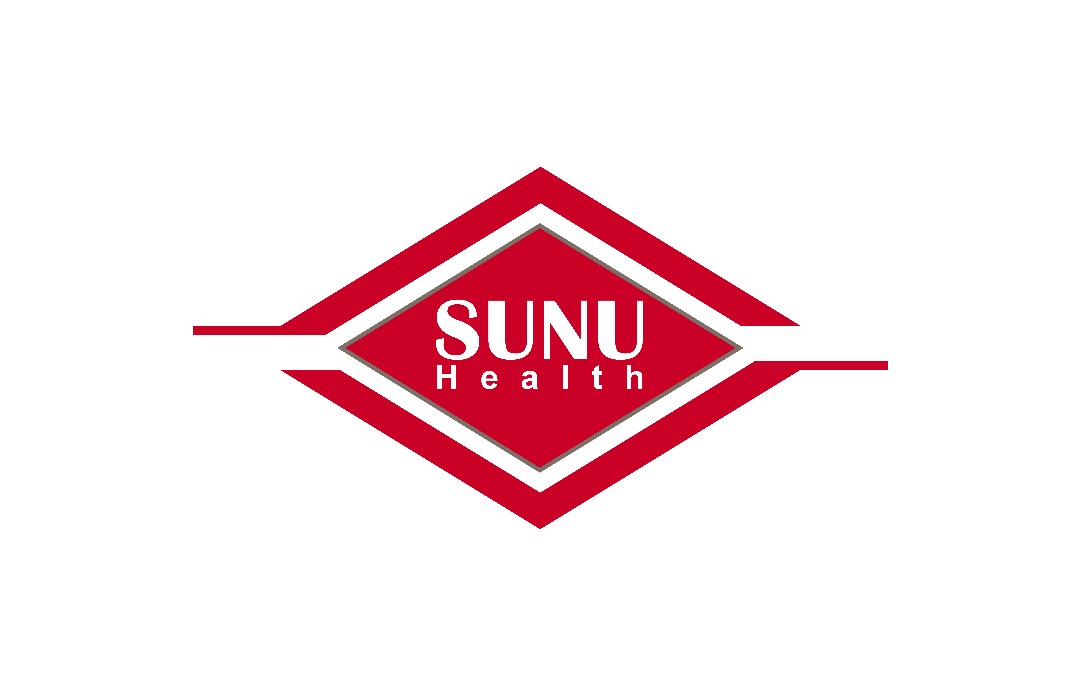
By Modupe Gbadeyanka
The decision of the management of SUNU Health Nigeria Limited to adopt the strategy of placing the enrollee and customer at the heart of its operations has started to pay off.
The company was recently announced as Most Customer-Focused Health Insurance Company of the Year at the Customer Service Standard Magazine Awards 2025.
The recognition underscored the company’s success in translating its dedication into tangible enrollee satisfaction and superior market service at the Nigerian Health Maintenance Organisation (HMO) landscape.
It also highlights the organisation’s dedicated efforts in streamlining claims processing, enhancing access to quality healthcare providers, and maintaining transparent, responsive communication channels with its diverse client base across Nigeria.
The accolade further serves as a powerful testament to the successful integration of digital solutions and human-centric service models at SUNU Health.
It positions the firm as a leader not only in providing robust health plans but also in delivering the supportive, personalized care that enrollees truly value.
“Clinching the Most Customer-Focused Health Insurance Company of the Year award is not just an honour; it is a validation of the core philosophy that drives every member of the SUNU Health team.
“We believe that healthcare is fundamentally a service industry, and our success is measured by the well-being and satisfaction of our enrollees,” the chief executive of SUNU Health, Mr Patrick Korie, commented.
“This award reinforces our resolve to continuously innovate and set new benchmarks for customer experience in the Nigerian health insurance sector.
“Our commitment to providing accessible, high-quality, and seamless healthcare solutions remains our top priority as we move into the new year (2026),” he added.
Health
Nigeria Launches First National Antimicrobial Resistance Survey
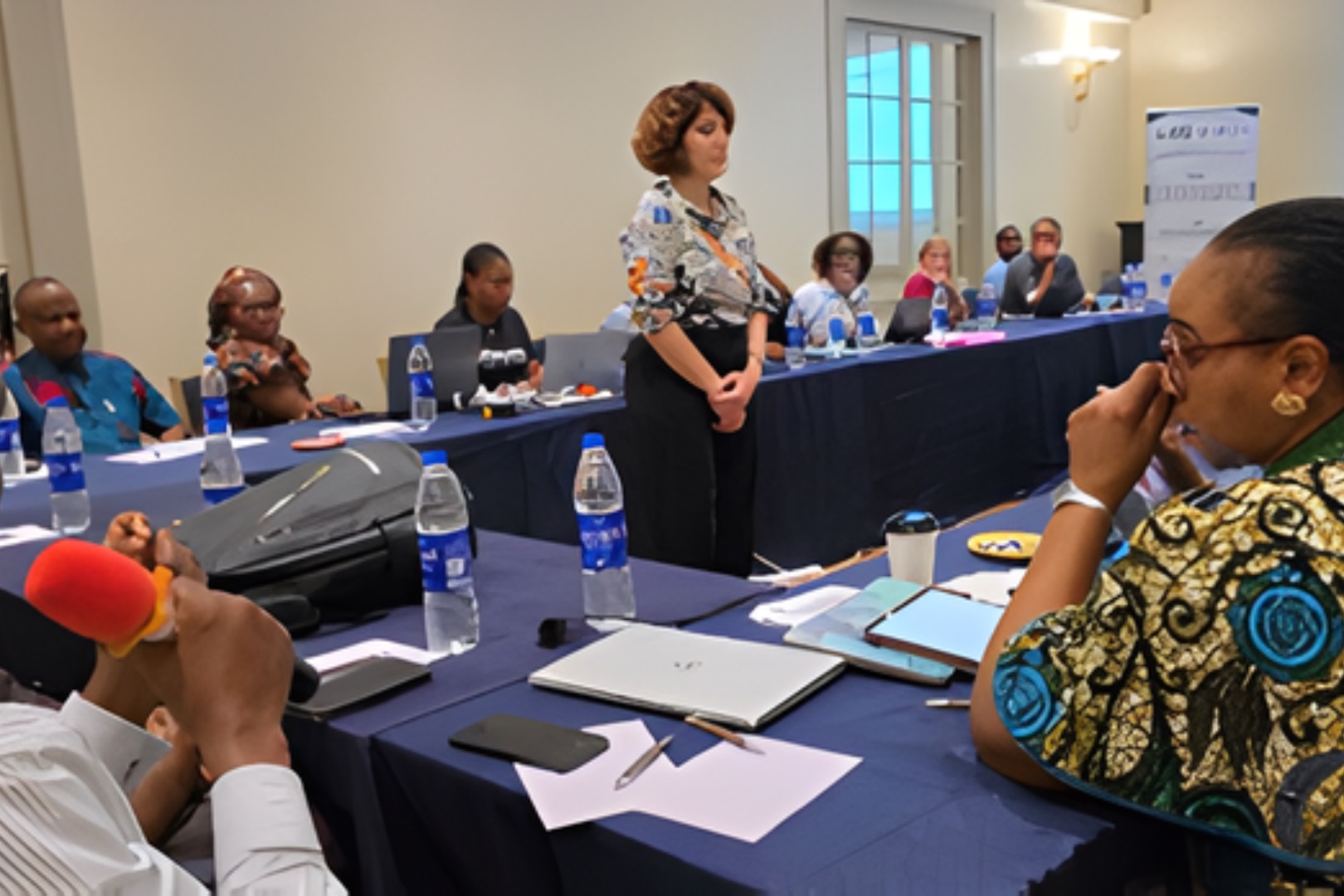
By Adedapo Adesanya
Nigeria has launched its first nationally representative survey on antimicrobial resistance to generate critical data to guide evidence-based policies, improve patient outcomes, and strengthen health system resilience.
Antimicrobial resistance occurs when bacteria, viruses, fungi, and parasites evolve to resist treatment, making infections harder to cure.
As a result, surveillance is essential to track resistance patterns, identify priority pathogens, and guide targeted interventions and with support from the World Health Organization (WHO) and other partners, the initiative marks a milestone in the country’s public health response.
Nigeria becomes the third country globally to partner with WHO on a national antimicrobial resistance survey. having been selected based on the country’s strong commitment to AMR surveillance, its updated WHO Nigeria NAP 2.0, and readiness to expand laboratory and data systems.
Africa’s most populous country ranks 20th globally for age-standardized mortality due to antimicrobial resistance . In 2019, an estimated 263,400 deaths in Nigeria were linked to it—more than the combined deaths from enteric infections, tuberculosis, respiratory infections, maternal and neonatal disorders, neglected tropical diseases, malaria, and cardiovascular diseases.
Globally, resistant infections in tertiary care settings cost between $2,371 and $29,289 per patient episode, extend hospital stays by an average of 7.4 days, and increase mortality risk by 84 per cent.
The survey will see the establishment of a national baseline on antimicrobial resistance prevalence to monitor interventions, assess the distribution, burden (morbidity, mortality, DALYs, cost), and diversity of AMR across regions and populations, as well as contribute to the global target of reducing AMR deaths by 10 per cent by 2030, in line with the political declaration endorsed at the 79th United Nations General Assembly in 2024.
It also seeks to strengthen routine antimicrobial resistance surveillance, including diagnostics, sample referral systems, and laboratory capacity.
Using WHO’s standardized methodology, the survey will run for 12–15 months and cover 40–45 randomly selected health facilities nationwide. Patients with suspected bloodstream infections (BSIs) will be identified using standard case definitions, and blood samples will be analysed in quality-assured laboratories.
Data will be collected across all age groups, covering clinical, demographic, laboratory, financial, and outcome indicators. Follow-up will occur at discharge, 28 days, and three months post-infection. The survey will sample approximately 35,000 patients suspected of BSIs to obtain around 800 isolates of the most common pathogens.
Dr Tochi Okwor, Acting Head, Disease Prevention and Health Promotion, Nigeria Centre for Disease Control and Prevention (NCDC) said, “With WHO’s support, we are confident the survey will generate the evidence needed to protect public health.”
WHO Representative in Nigeria, Dr Pavel Ursu, reaffirmed WHO’s commitment stating that ,“Nigeria is taking a decisive step toward combating AMR with an approach grounded in data, science, and measurable impact. This survey will provide the clarity needed to drive smarter policies, stronger surveillance, and better patient outcomes. Nigeria is laying the foundations for a resilient health system, one that protects lives, strengthens trust, and ensures that essential medicines remain effective for future generations.”
Adding her input, Dr Laetitia Gahimbare, Technical Officer at WHO Regional Office for Africa, added:“Strengthening surveillance enhances Nigeria’s capacity to detect and respond to AMR threats, supporting better patient outcomes, reinforcing health security, and building a resilient system.”
Professor Babatunde Ogunbosi, Paediatric Infectious Diseases Specialist at University College Hospital, Ibadan, highlighted the broader impact:, “This survey is about more than data. It’s about building national capacity for research, diagnostics, and policy. It integrates science into public health decision-making.”
Health
Our Vision Extends Beyond Offering Health Insurance Packages—SUNU Health
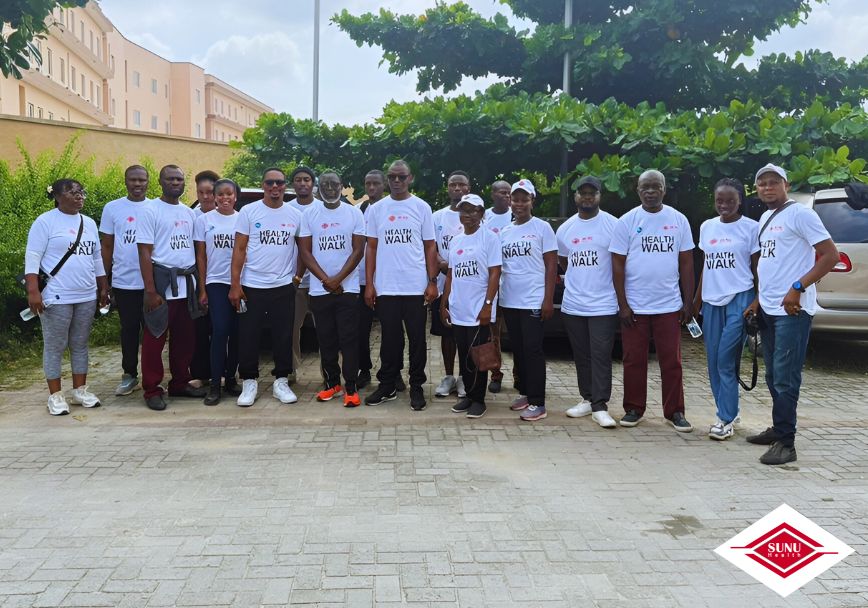
By Modupe Gbadeyanka
One of the leading Health Maintenance Organisations (HMOs) in Nigeria, SUNU Health, has said its philosophy is proactive wellness, noting that this was why it recently partnered with The Divine Physician and St. Luke Catholic Chaplaincy Centre for a community health initiative.
The chief executive of the company, Dr Patrick Korie, said, “SUNU Health’s vision extends far beyond merely offering health packages and insurance.”
“We are fundamentally interested in proactive wellness—preventing illness rather than just treating it. This annual exercise is a crucial part of that commitment, and we will continue to champion it for as long as we exist,” he stressed.
The medical practitioner led the company’s annual Health Walk in Lagos on Saturday, November 8, 2025. The event drew hundreds of health enthusiasts, including the Chaplain of the centre, Rev Fr. John Okoria SJ.
His active participation reinforced the spiritual and moral commitment to holistic well-being, proving crucial in mobilizing staff and community members, thereby ensuring the vital wellness message reached a broad and deeply engaged audience.
The health walk covered several major streets in Lagos, starting from Ishaga Road and navigating through Itire Road, Randle Avenue, Akerele, Ogunlana Drive, and Workers Street before concluding back at the starting point. Following the vigorous walk, participants engaged in a session of high-energy aerobics and other outdoor exercises, reinforcing the day’s focus on fitness.
“We are delighted to champion this vital health initiative alongside the Catholic Chaplaincy Centre LUTH/CMUL. The turnout was truly delightful, reflecting the community’s deep desire to embrace wellness.
“Collaborations like this amplify our message and commitment to the Nigerian community,” the Brand and Corporate Communications Lead at SUNU Health, Mr Samuel Olayemi, stated.
-

 Feature/OPED6 years ago
Feature/OPED6 years agoDavos was Different this year
-
Travel/Tourism9 years ago
Lagos Seals Western Lodge Hotel In Ikorodu
-

 Showbiz3 years ago
Showbiz3 years agoEstranged Lover Releases Videos of Empress Njamah Bathing
-

 Banking8 years ago
Banking8 years agoSort Codes of GTBank Branches in Nigeria
-

 Economy3 years ago
Economy3 years agoSubsidy Removal: CNG at N130 Per Litre Cheaper Than Petrol—IPMAN
-

 Banking3 years ago
Banking3 years agoFirst Bank Announces Planned Downtime
-

 Banking3 years ago
Banking3 years agoSort Codes of UBA Branches in Nigeria
-

 Sports3 years ago
Sports3 years agoHighest Paid Nigerian Footballer – How Much Do Nigerian Footballers Earn




